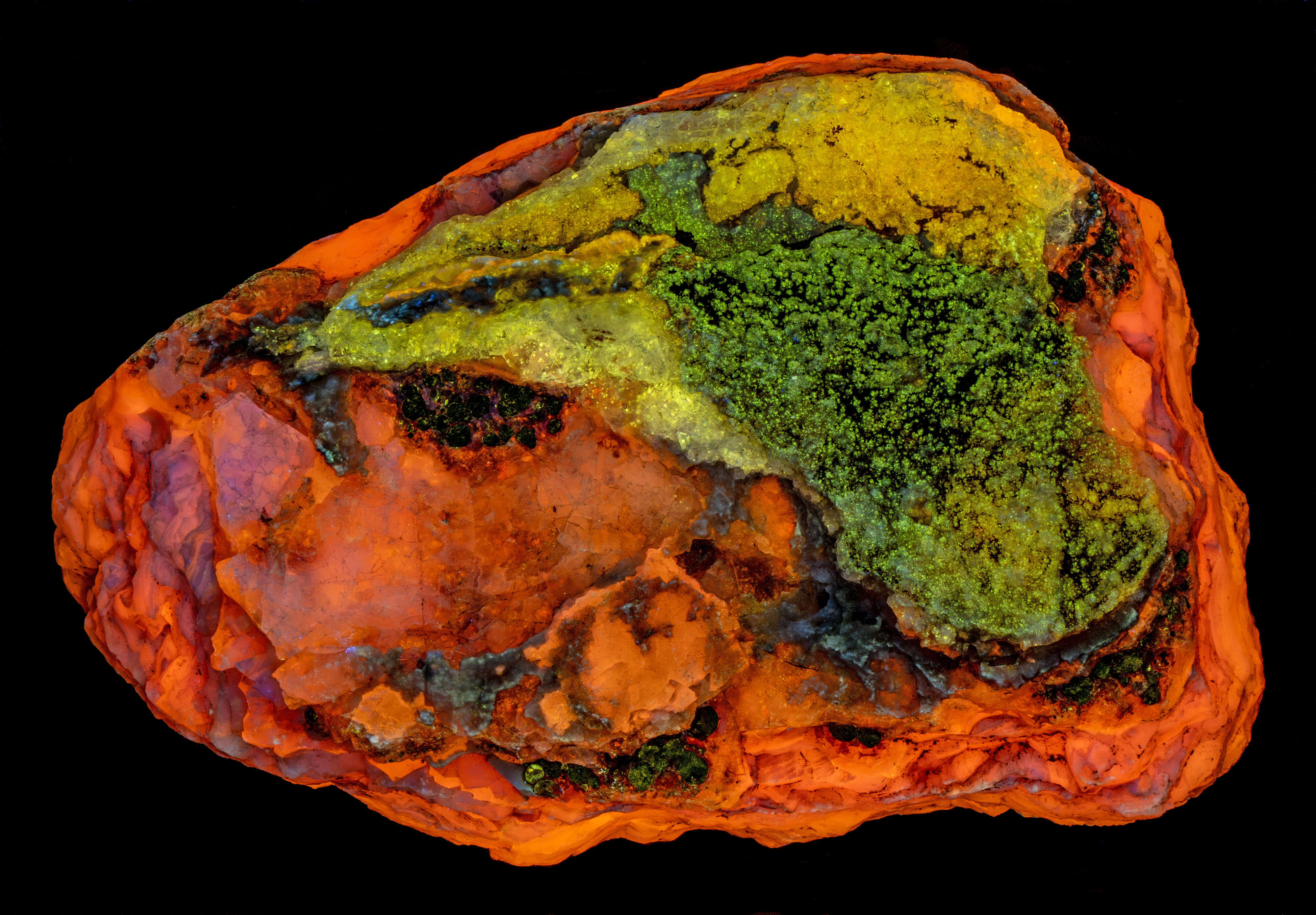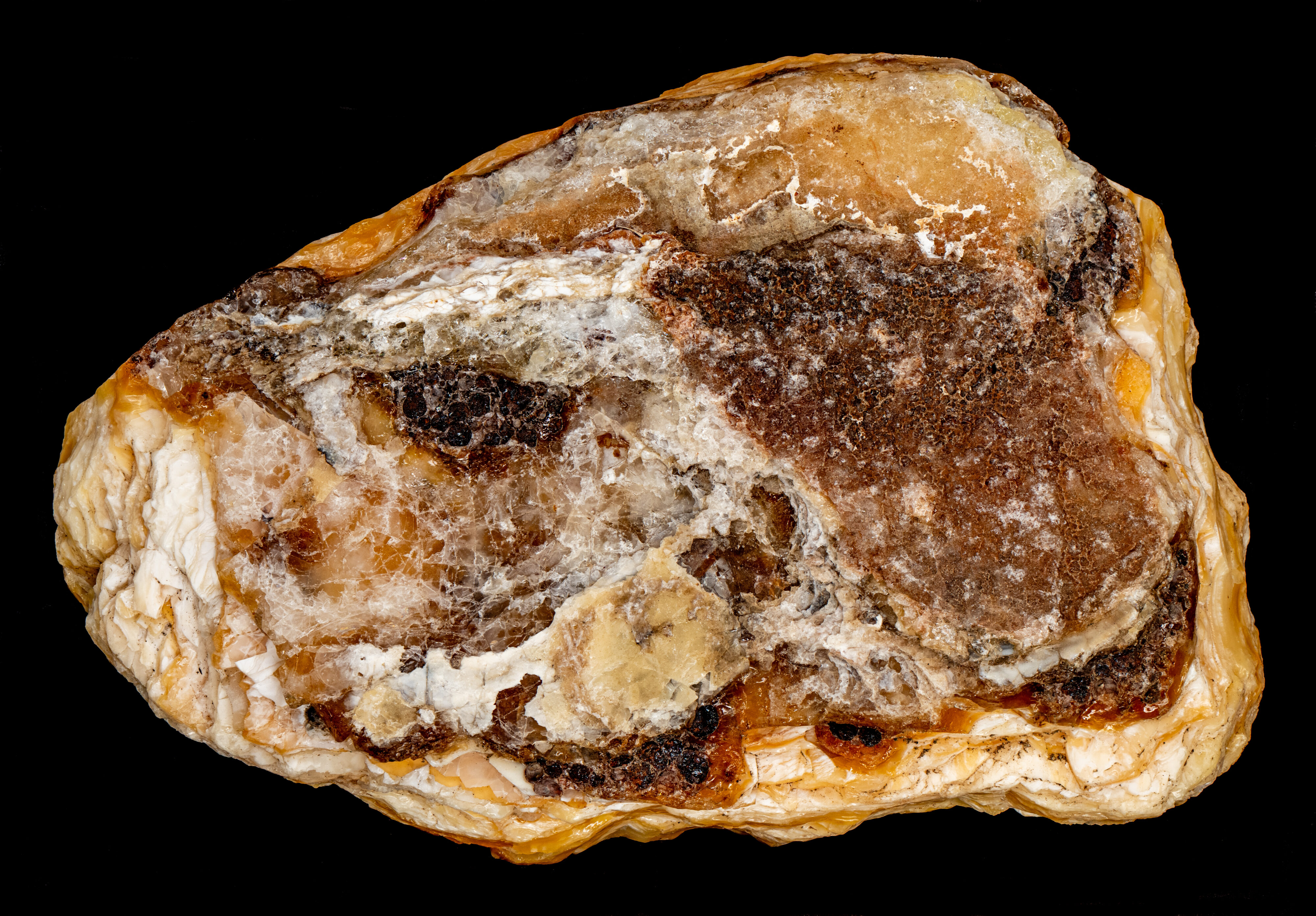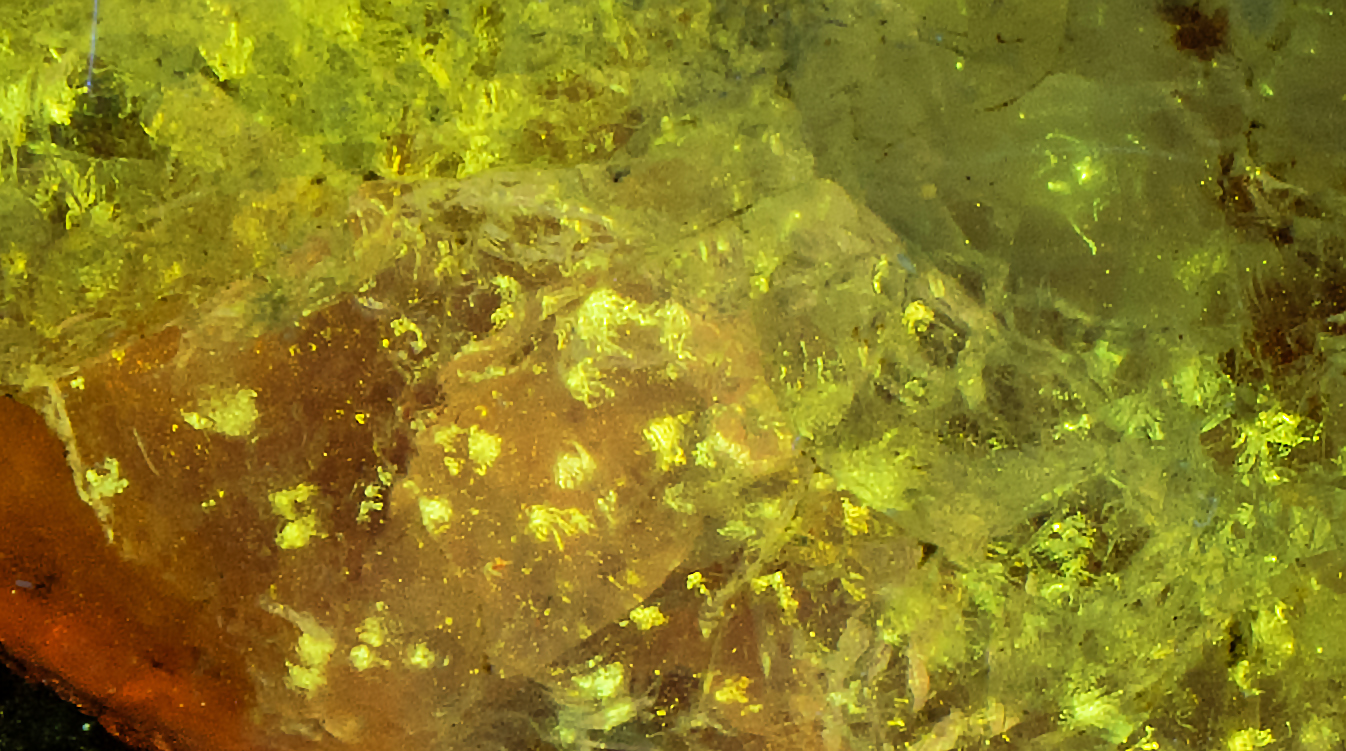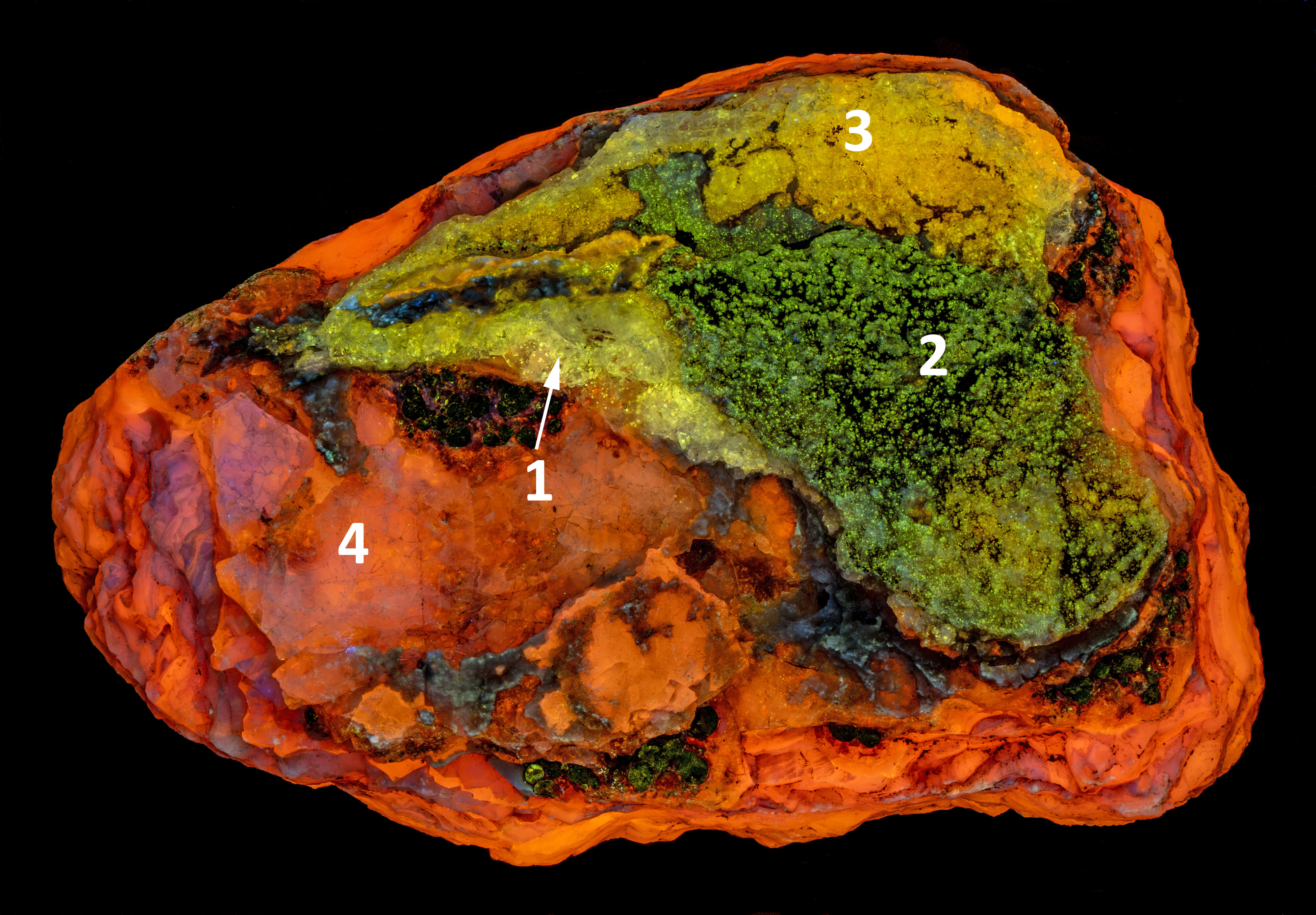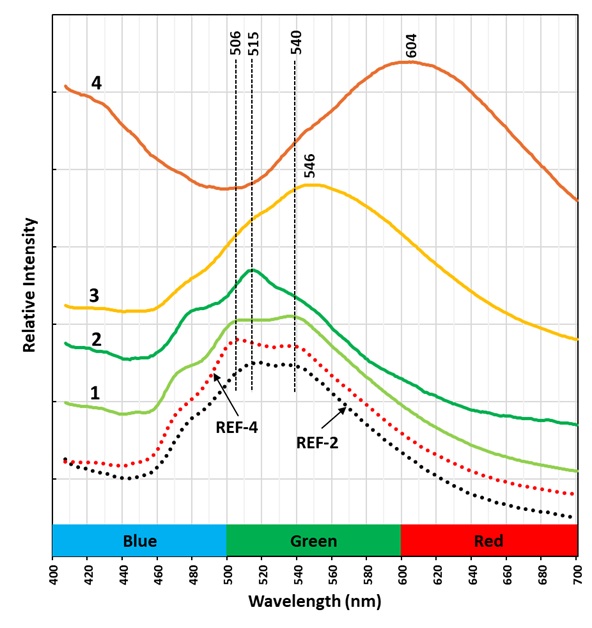Hokkaidoite and Opal-AN from Japan
Contributed by: Michael Crawford
Date: Aug 12th, 2025
Locality: Shikaribetsu Lake, Shikaoi (Shikaoi-Ch?), Kato District, Tokachi Subprefecture, Hokkaid? Prefecture, Japan (See on Mindat)
Size: 9 x 13 cm
Description:
This is a four-color specimen of opal-AN and hokkaidoite (C22H12) from Shikaribetsu Lake, Hokkaido Prefecture, Japan. The hokkaidoite occurs as small dendrites and clusters encased in one of the four opal-AN types in this specimen. The closeup image of longwave fluorescence shows the yellow-green, fluorescent hokkaidoite. The hokkaidoite identification is based on the habit shown in the closeup image and the longwave emission spectrum of the clusters (#1 in the spectral plot) matches the spectrum of another specimen with I own with confirmed hokkaidoite (REF-4 in the spectral plot). The yellow green fluorescence of hokkaidoite is caused by its polycyclic aromatic hydrocarbon (PAH) structure. The PAH structure has a high number of conjugated double bonds that are easily excited by UV light.
The opal-AN fluoresces under all wavelengths of UV illumination. The fluorescence is brightest under longwave light and there is no afterglow. The green, fluorescent opal forms small clusters and has a speckled appearance in the longwave image. Its emission spectrum has two peaks at 480 nm and 515 nm. It might contain another type of organic mineral instead of being opal-AN. The emission spectra of the orange and yellow fluorescent opal-AN have broad peaks with maximum at 546 nm and 604 nm. The fluorescence is likely activated by organics.
Summary of luminescence responses:
Hokkaidoite (Mindat) (RRUFF)
- Fluorescence under Longwave (365nm LED) UV light: Yellow
- Fluorescence under Longwave (365nm LED) UV light: Green
- Fluorescence under Longwave (365nm LED) UV light: Yellow
- Fluorescence under Longwave (365nm LED) UV light: Orange

